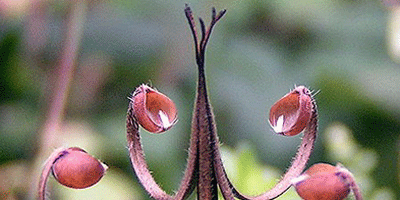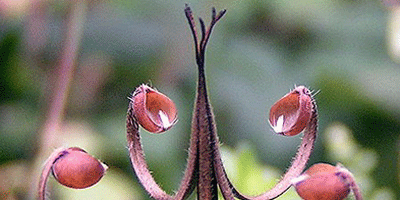Catapults for Seeds
Plants have evolved some very effective ways of dispersing their seeds, from apple trees with tasty fruit eaten by migrating animals, to dandelions sporting feathery seeds that float on air. Other plants employ more firepower: some species have developed spring-loaded catapults or slingshots to spread their seeds. In these cases, the spring tension is usually cranked up as the plant dries out and its tissues shrink or bend. Not much is known about the connection between the intrinsic geometry of the plant cells and the shape transformations during changes in humidity. In a paper in Physical Review Letters, Hillel Aharoni of the Hebrew University of Jerusalem, Israel, and colleagues report their experimental and theoretical approach to the problem.
Aharoni et al. begin by modeling rodlike structures in two species of geranium, cranesbill and storksbill, that employ elastic fibers to launch their seeds. Rather than building in a twist or bend to the rods, the authors find that the dehydrated conformation arises from the intrinsic 3D geometry of the plant cells driven by the geometric arrangement of microfibers within the cell wall. These predictions are confirmed by x-ray scattering measurements and by tracking the conformational changes during drying.
The researchers note that their model is applicable to a wide range of composite elastic structures, regardless of scale or mechanical properties. Understanding better these natural plant systems may aid development of smart mechanical structures and elucidate microscopic biomechanics of living cells. – David Voss





